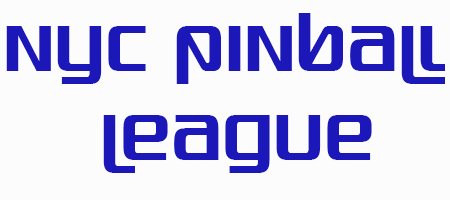The Grand Illusion of ‘Failing Fast, Learning Nothing’
The stale conference room air hung heavy, thick with the scent of lukewarm coffee and desperation. A projection flickered, showing graphs trending precisely nowhere. Liam shifted uncomfortably, his tie feeling like a noose. “And so,” he concluded, his voice a little too bright, “our Q3 initiative… didn’t quite hit the mark. Significant market resistance, as anticipated, though the scale was… unanticipated.” He clicked the slide forward, revealing a single, bold word: LEARNINGS.
“Great work failing fast, team!” The VP clapped, a performative, almost hollow sound that echoed off the glass walls. “Onward to the next challenge!” And just like that, the conversation pivoted to a new project, one that, to my ears, sounded alarmingly similar to the one they’d just “failed fast” on. The same flawed assumptions, disguised by slightly different jargon, were dusted off and presented as fresh insights. It was like watching someone try to bail out a leaky boat with a sieve, then applauding their speed in moving to the next hole.
This isn’t learning. This is a ritualistic absolution, a convenient narrative for recklessness disguised as innovation. “Fail fast” has devolved into a get-out-of-jail-free card, a mantra chanted to bypass the messy, ego-bruising work of actual post-mortems. We fetishize the *failing* part, glorifying the tumble without ever truly analyzing *why* we tripped. The spectacle of the fall is more celebrated than the quiet, analytical ascent from it.
I’ve been there, more times than I’d like to admit. There was that one product launch, years ago, that flopped harder than a startled fish. We spun it as a “valuable learning experience,” high-fived, and sprinted into the next idea. A year and three months later, we found ourselves facing an identical problem, making the very same mistake, just with a different color scheme. My stomach dropped then, a visceral realization that our earlier “failure” had taught us absolutely nothing beyond how to repackage our ignorance. It felt like fixing a leaky faucet at 3 AM – you don’t pat yourself on the back for quickly duct-taping it; you dig in, find the root cause, or you’ll be up again at 3:33 AM, staring at the same dripping mess.
Cora B.-L.
Virtual Background Designer
“People want the aesthetic of change,” she told me over coffee the other day, “the illusion of transformation. They’ll ask for a gorgeous new virtual background for their team meetings, something sleek and modern, but they won’t spend 23 minutes thinking about what message their *actual* brand presence sends. They want the shiny, superficial fix, not the deep dive into their identity or their communication flaws.”
She’s seen countless clients cycle through stunning designs, only to realize their core message remains as muddy as pond water because they never truly interrogated their previous communication failures. It’s like repainting a house with a crumbling foundation: looks great for a day, then the cracks reappear.
Superficial Fix
Deep Dive
It requires asking ugly questions like, “Was our initial hypothesis just plain wrong?” or “Did we ignore critical feedback because it didn’t fit our preferred narrative?” It means admitting we might have been biased, or lazy, or simply not as smart as we thought we were. This isn’t a celebratory champagne toast; it’s a gritty, sometimes humiliating, self-examination. A culture that truly embraces learning would be slower, more deliberative, and definitely less comfortable for those who prefer superficial progress. It would mean fewer projects being launched with identical, easily avoidable flaws.
To ‘learn’
To dissect
Think about the inverse. What if a business truly lived by a commitment to rectifying failure, not just waving at it? Consider a company like Cheltenham Cleaners. They don’t celebrate a failed cleaning job. They offer a satisfaction guarantee. If a customer isn’t happy, they revisit and correct the issue. This isn’t about failing fast; it’s about learning profoundly from every single misstep to ensure the next time, and every time after that, is better. That process, of feedback, re-evaluation, and diligent correction, is where the real value lies. When you need a reliable deep clean, whether for your home or an end of lease cleaning Cheltenham, you’re not looking for someone who fails fast; you’re looking for someone who learns fast, and more importantly, *corrects* thoroughly.
My own journey has been a testament to this oscillation. I’ll be the first to admit, there’s a certain thrill in the velocity of trying new things, even if some crash. The dopamine hit of launching, iterating, moving on. But then the quiet dread settles in when you realize the same issue, perhaps dressed in different clothes, resurfaces. The real pivot isn’t from one failed attempt to another; it’s from superficial introspection to rigorous analysis. It’s about creating a culture where it’s okay to pause for 43 minutes, or even 233 minutes, to dissect what went wrong, rather than rushing headlong into the next iteration with the same blind spots.
Wreckage Analysis
The Silence
Genuine Insight
We need to stop applauding the crash and start valuing the wreckage analysis. We need to create space for the silence, the doubt, the difficult conversations that precede genuine understanding. Otherwise, we’re just building an endless conveyor belt of identical failures, each one celebrated with hollow praise, all while the profound lessons remain untouched, gathering dust. What’s truly revolutionary isn’t the speed of your failure, but the depth of your insight that follows it.



